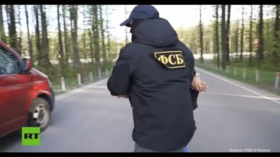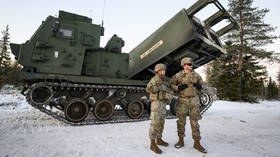Infrastructure literally melts under record heat in the US

As jets get stuck in melting asphalt, highways crack and form new “speed bumps,” and storms wipe out countless power lines, the US is becoming alarmed by the effect of the weather on its infrastructure.
With temperatures over 100 degrees Fahrenheit (about 40 degrees Celcius), a New York subway train derailed after the heat stretched the track, forming a sharp angle. In Texas, the clay-rich soils under highways have been shrinking and cracking, the New York Times reported.As the US is in the midst of its worst drought since 1934, its infrastructure is taking the toll. This year, the US witnessed the warmest spring since record-keeping began in 1895, and the period between July 2011 and June 2012 was the hottest 12 months on record, CNN reported.Nationwide, states are struggling to deal with the heat, as well as severe storms and wildfires.This summer, a nuclear power plant in Chicago was required to get permission to keep operating because the pond it used for cooling water reached 102 degrees Fahrenheit, surpassing the legal limit by two degrees.A power plant nearby the other was forced to shut down because too much of its cooling water dried up, causing the intake pipe to become high and dry.In other regions across the US, highways are expanding, pressing against each other, and forming dangerous speed bumps. Designed solely for the local climate, highway systems could face dramatic failures during severe weather changes, said Tom Scullion, a senior research engineer at the Texas Transportation Institute at Texas A&M University.But the record-breaking heat wave is not the country’s only concern. Severe storms have also been leaving their mark. A June 29 storm in the Northeast left 4.3 million people in 10 states without power, causing electric company Pepco to seriously contemplate burying its power lines – an endeavor which, at a cost of $1.1 to $5.8 billion, it ultimately deemed too expensive.In the past two and a half years, Pepco has dealt with five storms for which recovery took at least five days.“We’ve got the ‘storm of the century’ every year now,” Bill Gausman of the Potomac Electric Company told the New York Times.Last year, 14 extreme weather-related events cost the US economy more than $55 billion.And forest fires – like the fire that wiped out large parts of Colorado this summer – can also have long-term costs. Aside from immediate damage caused by fires and storms, they can also affect water quality and water use, since runoff from storms and falling ash can shut down reservoirs.Vicki Arroyo of the Georgetown Climate Center told the Times that the federal government must do more to prepare for disasters that she attributes to climate change.“They are not acknowledging that the future will look different from the past,” she said.“And so we keep putting people and infrastructure in harm’s way.”As the US continues to melt, crack and burn with each major storm and drought, its infrastructure may continue to crumble, as it already struggles with crop harvest shortages and rising food prices.














